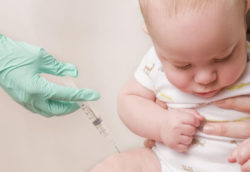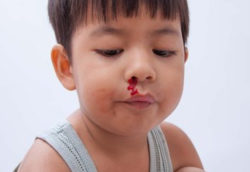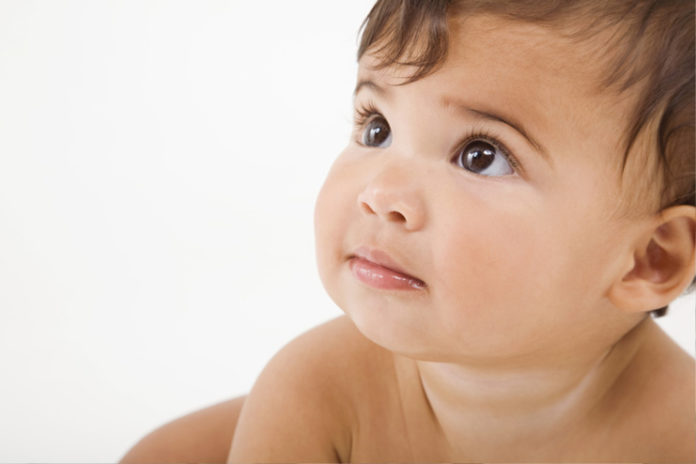Human skin color closely relates with the geography and the sun’s ultraviolet rays. Skin color of the human may range from black to colorless. Whether the dark or bright or any other shade in between, it remains even throughout the body for most of the people but, this is not the case with the Vitiligo child. They have the white spots or patches at some places or throughout the body.
Every year world Vitiligo day is celebrated on 25th June to create awareness in the people about the symptoms, causes, and the treatment of this disease. This vitiligo may not have any effects on the health of the child but, you should intervene at the right time and seek the proper treatment to mitigate the impressions of the Vitiligo. Here is something that you can find more about the Vitiligo and its treatment procedures.
What Is Vitiligo In A Child?
Vitiligo is a condition in which the skin stops producing the pigment called melanin, that determines the color of hair, skin, and eyes. It makes the parts of the skin and hair look white. Small irregular white patches appear on the skin of the child that may grow larger or spread as the kids grow. More than half of the vitiligo cases known to appear between the age of 10 and 30 years. As per the American Vitiligo Research Foundation, it is known that vitiligo can occur at any age and that may happen even with the newborn babies.
About 1 to 2 million of people in the United States face this situation and more than half of them are kids and teens. Studies show that pproximately half to one third of the people develop this condition by the age of 20 years and 25% are likely to develop this condition before 8 years. The good thing with the vitiligo is that it not contagious or medically dangerous.
Types of Vitiligo in Babies:
According to the intensity and the location of the patches dermatologists categorize the vitiligo as following:
1) Non segmental vitiligo:
It is usually the most common type of the vitiligo and is characterized by the white patches on the both sides of the body. it is also called as bilateral vitiligo, vitiligo vulgaris, and generalized vitiligo.
The color change starts to begin from the hands, around the eyes or mouth, and on the feet. In some other cases, it occurs in the areas where the rubbing of the skin takes place frequently. Under this condition, color change can be easily noticeable and spreads to more parts of the body easily.
You may notice the symmetrical patches on the following areas of the body:
● Back of the hands
● Arms
● Skin around the body openings such as eye
● Knees, elbows, and feet
2) Segmental vitilogo:
This is the most rare type of vitiligo and occurs on one side of the body. It is also known as unilateral vitiligo. It starts at the age which is very younger than the age at which non segmental vitiligo occurs. It can occur over the segment of the body usually one arm or leg. Half of the cases under this condition may encounter the color change of the hair, eye brows, and eyelashes.
Vitiligo is further categorized into three categories depending on its intensity.
Localized: usually one or two white spots occurs on the body.
Generalized: you may notice the depigmentation at several parts of the body.
Universal: it is the rare form of vitiligo and you may notice the white patches at the major parts of the body.
Causes of vitiligo in children:
1) Genetics:
Genetic factor is one of the most common causes of vitiligo in children. Lack of skin pigment called melanin results in this condition. This pigment is produced by the skin cells called melanocytes. Melanin gives the color to the skin.
In the people with vitiligo, there are not enough active melanocytes to produce melanin in the skin resulting in the white patches to develop on the skin and hair.
2) Autoimmune condition:
It is thought to be the reason for the non segmental vitiligo. The immune system does not work properly with the autoimmune condition. Your body starts attacking the healthy cells and tissues instead of attacking the harmful foreign cells such as viruses. For those who have the non segmental vitiligo, the melocyte producing the melanin is destroyed by the immune system.
Some people with the vitiligo develop the other conditions known as hypothyroidism. But, it is not sure that everyone with vitiligo develop the same condition.
3) Neurochemicals:
Chemicals are released from the nerve endings of the skin in some people which is thought to be the reason for the vitiligo in children. These chemicals are poisonous and may destroy the melanocyte skin cells.
4) Pernicious anemia:
This type of anemia results from the Vitamin B12 deficiency. Vitamin B12 is required to make up the red blood cells in the body. Research suggests that Vitiligo patients are likely to develop the pernicious anemia.
5) Alopecia Areata:
Alopecia areata is characterized by the patchy hair loss especially on the scalp but it may take place at any other parts of the body. both vitiligo and Alopecia areata are regarded as the autoimmune diseases. These two diseases are quite different targeting different cell types. Both these diseases have the common genetic risk factors and the diagnosis is required to differentiate them.
Studies support the concept that the people with alopecia areata are at the high risk of developing the vitiligo than the other population.
6) Other factors:
Vitiligo is initiated by some triggers such as:
● Stressful events such as childbirth in adults
● This may occur due to the severe damage to the skin
● Exposure of the skin to certain chemicals may cause vitiligo.
Vitiligo is not contagious or infection and there is no possibility of catvhing it from others.
Signs and symptoms of vitiligo in child:
White and depigmented patches on the skin are the primary symptoms of vitiligo in children. The areas of the body that are exposed to sunlight are more prone to the vitiligo. The spots can be of same or different sizes. Here are a few vitiligo child symptoms.
The first and the foremost step is to accept the disease, it makes easier for your child to accept the society with confidence.
● You can notice the pigmented skin losing in patches
● Whitening or graying of the hair on the head, eyebrows, eyelashes
● Vitiligo can show its effects on the mucus membrane. You may notice the hypopigmentation in the oral and nasal cavity.
● A color change in the inner layer of the eye.
Diagnosis of vitiligo in children:
Diagnosis of the vitiligo can be done mostly in the clinical setting. Its diagnosis may not require invasive and sophisticated investigations. In children with fair skin tone, it will be difficult to differentiate the impression of the vitiligo from the surrounding skin. Under these circumstances, examination under the wood’s lamp will be helpful. The routine work up for all the patients is to calculate the complete blood count and the fasting blood sugar.
In the cases of diagnostic difficulty, skin biopsy may be performed. Histopathological examination gives up the information about the absence of melanocytes in the established sites of vitiligo.
● Doctor might require the following details to diagnose the vitiligo in child:
● Any family history of the vitiligo or any other autoimmune conditions in your family
● Any previous injury in the affected areas like sunburn or severe rash
● The extent of the skin’s sensitivity to the sun
Complications of the vitiligo:
Vitiligo may be accompanied by some other conditions:
● Lack of melanin make the skin more vulnerable to the sun rays and it is recommended to use the sunscreen prescribed by your doctor.
● This condition sometimes associated with the eye problems including the inflammation of the iris. Inflammation of the middle layer of the eye and this may also lead to the ear infections.
● Older children and teenagers are likely to lose the confidence, if the vitiligo occurs on the frequently exposed areas of the skin.
Home remedies for Vitiligo in children:
Though vitiligo is not harmful or contagious, it can offer your kid some stressful situations taking into account the social stigma associated with this condition. Here are a few home remedies that can help you deal with the Vitiligo:
1. Papaya:

It is a delicious fruit and offers wide range of health benefits. It is effective in the treatment of vitiligo. It is rich in Carotene and effective in securing the skin health.
Make your child to eat the papaya regularly that can help to repair the torn skin cells and restore the damaged melanin cells caused by the vitiligo. You can also rub the papaya pieces over the affected area and wash it off after 10 minutes.
2. Red Clay:
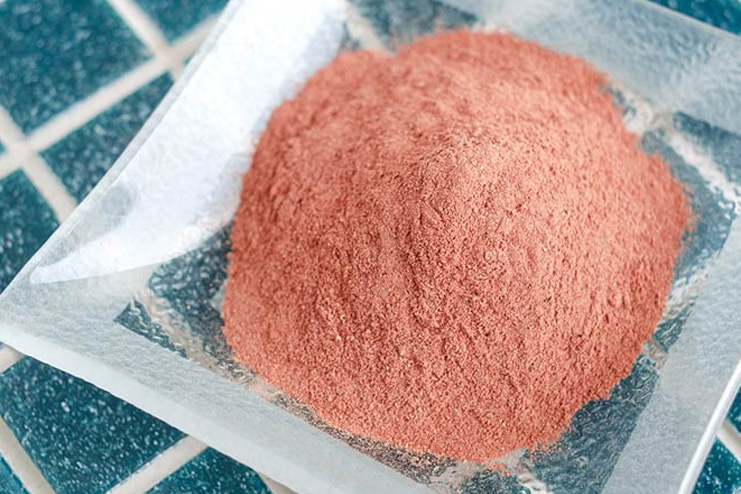
Being rich in the copper content, red clay is the effective remedy for the vitiligo. Add a tablespoon of ginger juice to two tablespoons of red clay and apply it over the affected area. The ginger juice can foster the blood flow in the depigmented area.
3. Drink water from the copper vessel:

Staying hydrated all the time is more important to keep your body healthy and away from the diseases. Make your kid to drink the water from the copper vessel which can help to improve the melanin in their body and mitigate the intensity of the patches contributed by vitiligo.
4. Basil Leaves:

These leaves are well known for the anti aging and the anti-viral properties. Add the lime juice to the paste of basil leaves and apply it over the affected areas. This can help to stimulate the production of the melanin over the skin.
5. Walnuts:

Eating 5 walnuts a day can help to deal with the vitiligo. For the effective results, crush the walnuts into powder and add few drops of water to make a thick paste. Apply this paste over the affected areas and wash it off after 15 minutes.
6. Turmeric:

Turmeric with its anti-bacterial properties, is the effective home remedy for any kind of skin diseases. Add turmeric powder to the mustard oil and apply it over the affected areas to stimulate the pigmentation of the skin.
Clinical Treatment for Vitiligo in Children:
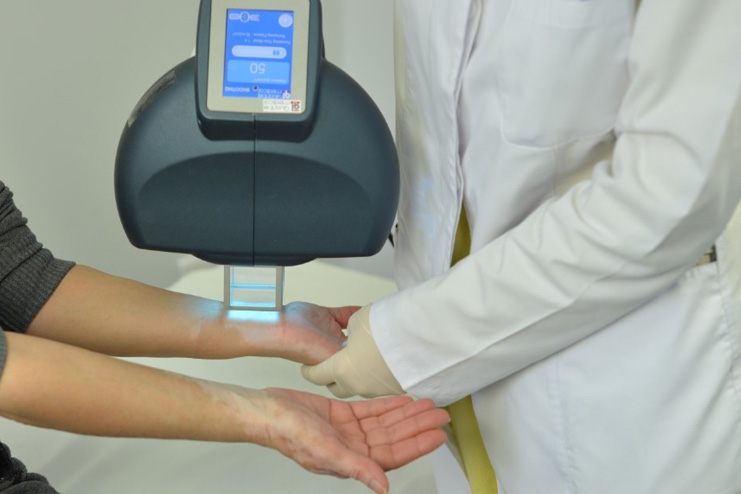
There is no specific treatment for the vitiligo. Some patches may clear out on their own without any treatment some others require the treatment that help to even out the skin tone. Some treatments can be done at home and some require the treatment by doctor. The impact of the treatments may not be the same on all the persons. No treatment can make the patches disappear 100%.
Here are a few ways to get rid of vitiligo in children:
1. Sunscreen:
Putting on sunscreen will help to protect your child against the skin cancer. This is because of the fact that the vitiligo spots can’t get tan as they do not have the melanin. They may burn and get scary under the sunburn. The rest of the skin may get tan very easily highlighting the vitiligo spots even more. This is more worse if your child has the light skin.
2. Tropical treatments:
Tropical treatments can help to limit the area of the involvement if the affected area is less than 20% of the overall body. Based on the site of involvement, three categories of the drugs can be used in the treatment of the vitiligo:
● Tropical steroids
● Tropical calcineurin inhibitors
● Tropical vitamin D
Tropical calcineurin is the best recommended treatment for the facial and neck patches. Tropical Corticosteroids can be used for the other parts of the body. it is known have the fewer side effects and can be used twice a day. For the better development, vitamin D can be used in combination with tropical steroids.
3. Cosmetics:
Different kinds of concealers are available in the market to shield off the white patches of the skin. Ask your doctor for the recommendation and find out the best product that can work with your child’s skin.
You can put over the little make up to cover the patches. Cosmetics cover ups can enhance the self-image and make sure to choose the foundation or powder that is matching with the skin tone of your child. The downside with the cosmetics is that they are temporary and can wear off easily with rain, humidity, and sweat.
4. Light therapy:
This treatment involves making the affected areas of the skin get exposed to the special ultraviolet light. This is one of the best child vitiligo treatments. This treatment is recommended for the people with the widespread of the vitiligo and for whom the application of the tropical treatments is challenging.
For this treatment, the person is supposed to stand in a small space which is surrounded by the lamps around them. This treatment is not recommended for the younger children. This treatment has the increased risk of cancer in the people with the pale skin.
5. Mineral Complex Cream:
Mineral complex creams can be used as supplement to phototherapy. These creams are used to alleviate the damage caused by the oxidative pigment cell. There are some complications associated with the mineral complex creams. Your doctor will prescribe the one with fewer complications.
6. Depigmentation:
If the vitiligo has covered almost 50 percent of the body, depigmentation is a choice. In this process, the skin tone of the unaffected areas will be reduced to match the whiter areas.
The process of depigmentation is done by applying strong topical lotions or ointments such as monobenzone, mequinol, or hydroquinone.
This treatment is permanent but can make the skin more sensitive. This process can take 12-14 months depending on the depth of the original skin tone. Exposure to the sun must be avoided after this process.
7. Oral Vitamin supplements:
Vitamin D and B-complex supplementations can improve the condition of the vitiligo. Low dose vitamin supplementations are recommended in the childhood. Do not attempt to treat the vitiligo in child without doctor consultation.
8. Psychotherapy:
Psychotherapy can help in the management of the negative emotions like depression, and anxiety that are associated with the vitiligo in child. Cognitive behavioral therapy and hypnosis are the recommended therapies to improve the quality of life in child with vitiligo.
9. Surgical grafting:
A vitiligo condition with no progress over the years is required to be managed through the process of grafting. The main theme behind the surgical treatment is to repigment the vitiliginous areas by the transplantation of the autologous melanocytes from the unaffected areas of the skin. Grafting is associated with the side effects such as pain and cobblestoning effect. This grafting is usually recommended for the stable segmental vitiligo.
10. Micropigmentation:
Under this technique pigment implantation will be done using the special instrument. It is the most effective treatment for the people with the darker skin with the patches around the skin.the most challenging step of this treatment is to find out the pigments matching the skin color.
Diet Tips to be followed during the Vitiligo treatment:

Carry out the treatment as soon as your child is diagnosed with the vitiligo. There are many treatments available but your doctor will prescribe the one that is suited for the age of your child. As Vitiligo is assumed to be the autoimmune disease, a strong immune system can work well to prevent the spread of depigmentation.
Any kind of skin condition can be treated well if the proper diet is followed during the treatment. Here are a few foods to be included in your diet plan during the treatment:
● It is recommended to consume the plant centric diet consisting of Spinach, beetroot, Carrot, Potato, Cabbage, radish, cauliflower.
● figs, dates, bananas, and apples are good to eat.
● Include protein rich foods including chicken breast, lean cuts of turkey, wild fish, and organic eggs in your kid’s diet. If your kid is a vegan, then kidney beans, chick peas, mushrooms, and lentils are the good choice.
● Check with your doctor before including the diary products in their diet as it depends on the level of condition.
● Avoid the processed and spicy foods in your child’s diet.
How to deal with the Vitiligo child’s emotions?
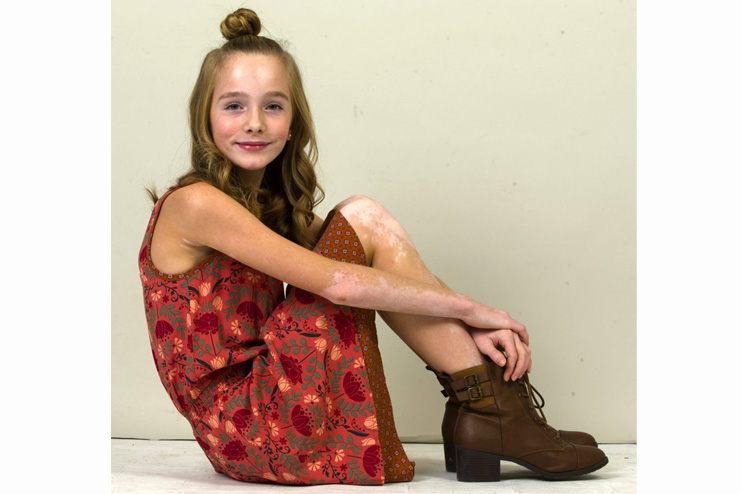
Even though you know that vitiligo is not dangerous, something that makes kids look different from their peers may impact their emotions in a negative way. As a parent, you can do a lot to boost the self confidence and the self-esteem of your kid:
● Instead of focusing on the vitiligo, focus on the areas that help them to cover it up. Let them realize that you are there to offer the support all the time.
● Let your child to realize that there is nothing to do with the skin color and make them know the things they are good at.
● Adopt few lifestyle changes that help your kid to cope well with this condition. Don’t keep any restrictions while they choose any new outfit except for the tight ones as they might prevent the proper blood circulation.
● Encourage your child to participate in the social events irrespective of their vitiligo.
● Allow them to get involved in the community that can help them feel powerful.
● Offer your child more emotional support and don’t let the feelings of depression, withdrawal, or anxiety strike your child.
In conclusion, there is no specific cure for the vitiligo with the promising results. With the advance in the technology there are many treatments to manage the condition and its side effects. Support from the parents can help the child to cope well with this condition.





















